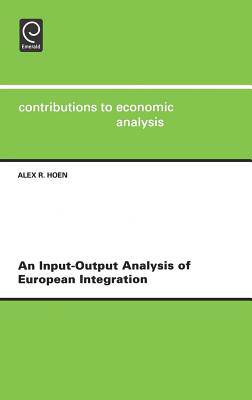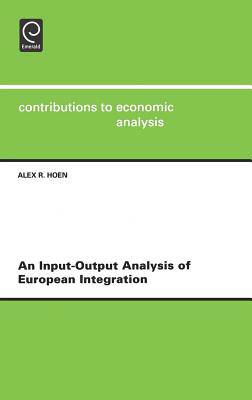
Je cadeautjes zeker op tijd in huis hebben voor de feestdagen? Kom langs in onze winkels en vind het perfecte geschenk!
- Afhalen na 1 uur in een winkel met voorraad
- Gratis thuislevering in België vanaf € 30
- Ruim aanbod met 7 miljoen producten
Je cadeautjes zeker op tijd in huis hebben voor de feestdagen? Kom langs in onze winkels en vind het perfecte geschenk!
- Afhalen na 1 uur in een winkel met voorraad
- Gratis thuislevering in België vanaf € 30
- Ruim aanbod met 7 miljoen producten
Zoeken
An Input-Output Analysis of European Integration
€ 285,45
+ 570 punten
Omschrijving
Trade theories predict and explain the consequences of economic integration. Generally, they show that freer international trade leads to specialisation, technological convergence and faster economic growth. This study compares the conclusions of the trade theories with empirical observations of economic changes in the European Union. These empirical analyses show that the main conclusions also hold empirically. However, many detailed empirical observations often contrast the theoretical expectation. Hence, although the trade theories do predict the general changes correctly, they are not capable of predicting the more specific empirical outcomes. The empirical analyses use intercountry input-output tables in constant prices with 6 EU countries (Germany, France, Italy, The Netherlands, Belgium and Denmark) of the years 1970, 1975, 1980 and 1985.These data prove to be a valuable contribution to analysing the economic effects of international integration, since they provide a consistent database that can be used to analyse many economic aspects, such as technology, specialisation, intra-industry trade, economic growth, sectoral distribution, and direct and indirect effects. This book will be especially useful to Regional Economists and Economists specialising in international trade, input-output analysis or European integration.
Specificaties
Betrokkenen
- Uitgeverij:
Inhoud
- Aantal bladzijden:
- 264
- Taal:
- Engels
- Reeks:
- Reeksnummer:
- nr. 253
Eigenschappen
- Productcode (EAN):
- 9780444510884
- Verschijningsdatum:
- 14/06/2002
- Uitvoering:
- Hardcover
- Formaat:
- Genaaid
- Afmetingen:
- 156 mm x 234 mm
- Gewicht:
- 553 g

Alleen bij Standaard Boekhandel
+ 570 punten op je klantenkaart van Standaard Boekhandel
Beoordelingen
We publiceren alleen reviews die voldoen aan de voorwaarden voor reviews. Bekijk onze voorwaarden voor reviews.








